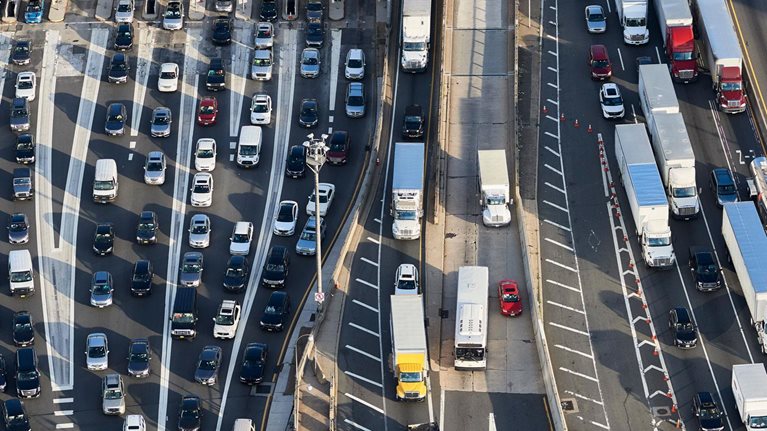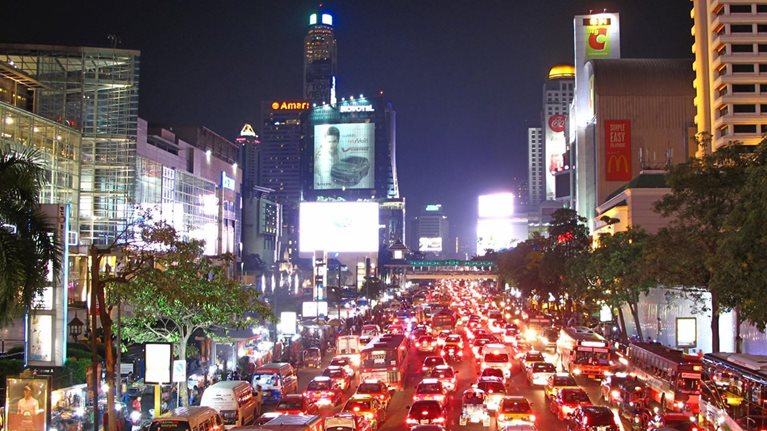Buses, trains, and roads have long been the staples of passenger mass transport. However, the tasks of measuring their usage and collecting traveler fares have changed dramatically over time. In the mid-19th century, transport authorities around the world began to move away from cash transactions—prompted by the inevitable pilferage that came along with it—by introducing the bell-punch ticket, a strip of paper with holes punched to show how far passengers could travel on a given fare. This simple invention revolutionized the bus industry, and it endures in some places today.
Stay current on your favorite topics
As technology evolved, cities rolled out ticket machines, fare collection gates, metal tokens, and magnetic stripe tickets. The introduction of smart cards in the 1990s further drove costs down and efficiency up. London’s Oyster cards are a prime example; because individual users could decide how many trips to buy at a time, and when to queue up to buy them, lines at peak hours vanished. Boarding speeds on buses improved as users simply had to touch a card on a reader rather than engage in the full cycle of buying a ticket.
But most passengers still need to buy tickets at some point in their journey. And regardless of progress, ticketing remains inefficient, from the perspective of both passengers and operators. Passengers who struggle to find the time to buy tickets ahead of time or keep track of pre-purchased physical tickets may have the option to buy them on board—but the process always includes some sort of transaction. And most public transportation operators end up spending between 10 and 15 percent of their revenue just in collecting fees from passengers in the form of tickets. That’s a huge loss of income—and an unnecessary one.
The advent of pay-as-you-go provoked a profound idea: what if users didn’t have to buy tickets at all? What if we could combine the speed and convenience of smart cards with something passengers already had in their pockets—like bank cards? In 2006, Transport for London (TfL), the public body responsible for organizing all of London’s transport, set out to answer this question. The resulting innovation—a contactless, ticketless card system—is helping to change the face of public transportation in London and offers a model for other cities.
Developing a new system
TfL’s new, ticketless card system means that passengers no longer need to buy tickets in advance or even load transit cards with available funds. They simply tap a credit or debit card on fare collection gates and bus fare card readers, and the fee is automatically subtracted from their account or charged to their card.

Voices on Infrastructure
Our quarterly compendium on infrastructure and capital projects
Fortunately for Londoners, TfL is a revenue-generating agency that additionally receives direct grants from the government, culminating in an annual budget of $10.5 billion. And in terms of large infrastructure projects, the $68 million it cost to research and deploy the new system was minimal—especially because of the model’s promise to reduce operator costs and increase transit efficiency. Having conducted customer surveys before embarking on the project, and with the simultaneous rise of contactless systems in retail environments, TfL knew travelers were likely to embrace the change.
With funding covered, TfL began tackling the many logistical hurdles to implementation. To start, in most financial transactions the amount is known and the transaction consists of a single swipe of a bank card. In transport, very often both the start and end points are needed to determine the fare. In London, with a system of daily and weekly capping, all use within a day or week needs to be assessed together to determine the fare.

Additionally, transactions need to be limited to less than half a second to maintain capacity at gates and keep bus boarding moving smoothly—restricting TfL from using traditional payment verification processes. It became clear that we needed to develop new global standards for transactions.
To overcome these and other challenges, TfL formed key partnerships with our suppliers. For example, we partnered with Cubic Transportation Systems, which developed hardware for the project, including card readers. But the software proved to be a barrier. TfL was inventing an entirely new transit payment model, and we realized that much of the development work could not be contracted out—no such contractor existed. As a result, TfL built much of the new software in-house, a task almost unheard of for public-sector organizations to take on. In many cases, TfL figured out how it wanted the system to behave as it went. And once the software was developed, Cubic helped to implement and deploy the new technology.
Impact and the path forward
The contactless card system launched on buses in December 2012 and on the rest of the transport system in September 2014. Since then, usage has grown steadily. Its four million active customers make an average of more than two million journeys per day and have used 25 million cards since launch. Android Pay, Apple Pay, and Samsung Pay—the three leading mobile payment solutions—all launched with London’s transport system, aiding in adoption of the technology. And more than 30,000 new cards are added to the system every day.

The system has also significantly reduced operator costs. The contactless card system, along with other initiatives, reduced TfL’s costs spent on revenue collection from 15 percent to 8 percent, and TfL expects the share to drop to 6 percent as more and more passengers adopt the contactless system.
As cities expand their footprints and their populations grow, they will need to consider innovative ways to move people easily and affordably across existing infrastructure. One solution is to increase the efficiency of this infrastructure. Systems such as contactless cards remove friction, capitalize on systems already in place, and encourage easy adoption. It’s an efficient model that cities around the world can follow—and many already are.
Photo courtesy of Transport for London


